The Ocean Strategy Hacks to Skyrocket Your Asian Market Presence
BUSINESS TIPS
Alan Wong
7/24/202412 min read
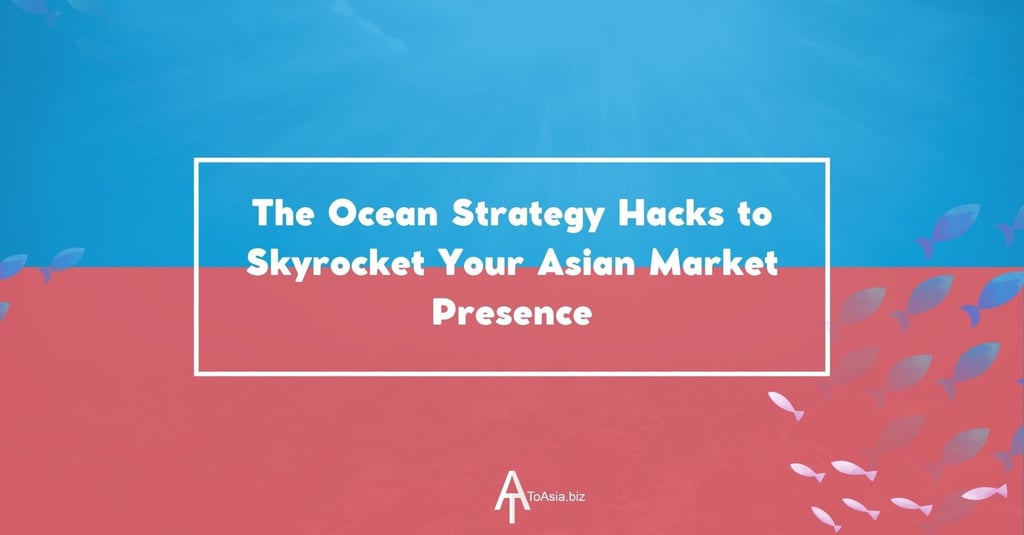

In the vast Asian business, a revolutionary approach is making waves.
Ocean Strategy isn't just another buzzword.
It's a game-changer that's reshaping how companies compete and thrive in Asia's dynamic markets.
At its core, Ocean Strategy divides the business world into two main waters:
Red Oceans: Crowded, competitive markets where businesses fight for the same customers.
Blue Oceans: Untapped market spaces with potential for high growth and profits.
But here's the kicker - there's also a Purple Ocean. It's the sweet spot where innovative companies blend the best of both worlds.
Why does this matter for Asia?
Rapid Growth: Asia's economies are expanding at breakneck speed. Ocean Strategy helps businesses ride this wave.
Diverse Markets: From tech-savvy Singapore to rural Indonesia, Asia's markets are incredibly varied. Ocean Strategy provides tools to navigate this diversity.
Fierce Competition: With millions of businesses vying for attention, standing out is crucial. Ocean Strategy offers a roadmap to differentiation.
Innovation Hub: Asia is becoming a global center for innovation. Ocean Strategy aligns perfectly with this trend, encouraging out-of-the-box thinking.
Cultural Nuances: What works in Tokyo might flop in Mumbai. Ocean Strategy's flexibility allows for cultural adaptations.
Remember when Samsung was just another electronics company?
They used Ocean Strategy principles to transform into a global tech leader.
That's the power we're talking about.
In the next sections, we'll dive deeper into how you can leverage Ocean Strategy to dominate Asian markets.
Get ready to chart your course to business success in Asia's opportunity-rich waters.
Conclusion: Navigating Asia's Dynamic Ocean
In the vast ocean of Asian business, success isn't about choosing a single strategy—it's about mastering them all.
Key takeaways:
Red Oceans: Dominate through efficiency and differentiation
Blue Oceans: Innovate to create new market spaces
Purple Oceans: Blend competition with innovation for sustainable growth
Your Ocean Strategy should be as fluid and adaptable as the markets you're navigating.
ToAsia.biz: Your Compass in Asian Waters
At ToAsia.biz, we don't just understand Ocean Strategies—we embody them.
Our brand colors, blue and red, reflect the dynamic nature of Asian markets
We tailor our approach to each client's unique position and goals
Our expertise spans Red, Blue, and Purple Ocean strategies across diverse Asian markets
Whether you're diving into fierce competition, exploring uncharted territories, or navigating the oceans in between, ToAsia.biz is your trusted business consultant.
Let's chart your course to success in Asia's exciting business seascape.
Source: The Strategy Institute
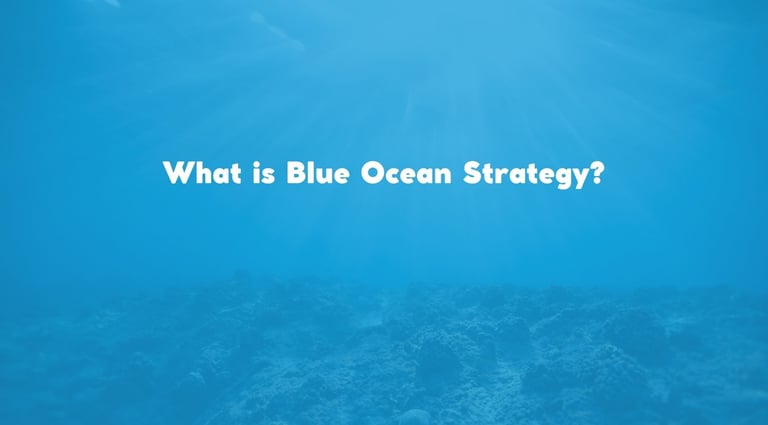

What is Blue Ocean Strategy?
Blue Ocean Strategy is a revolutionary approach that's transforming Asian markets.
At its core, Blue Ocean Strategy is about:
Creating new demand through innovation
Tapping into uncontested market space
Offering unique products or services that capture new value for customers
Imagine sailing into crystal-clear waters, free from shark-infested competition.
That's the essence of Blue Ocean Strategy.
Key characteristics:
Low competition: You're not fighting for scraps; you're feasting at a new table
Future-oriented: It's about growth and opportunity, not just survival
Differentiation and low cost: Achieving both, not choosing between them
Real-world success stories:
Netflix: Transformed from DVD rentals to streaming, creating a whole new industry
Before: People had to visit physical stores to rent movies, facing limited selections, late fees, and the inconvenience of returns.
Netflix's Blue Ocean move: Netflix created a new market space by first offering DVD-by-mail rentals, then pivoting to a streaming service with a vast library of on-demand content.
Result: Netflix transformed the entertainment industry, eliminating traditional pain points and creating a new subscription-based model that now serves over 230 million subscribers globally.
In Asia, Alibaba exemplifies Blue Ocean thinking:
Before: Sourcing Chinese manufacturers was a headache involving direct mail or events
After: Alibaba created a B2B platform connecting small Chinese exporters with global buyers
Result: A wholesale marketplace that scaled rapidly, with virtually no competition at launch
But here's the catch:
While theoretically lower risk than traditional strategies, Blue Ocean approaches can be a double-edged sword.
Heavy investment in research and development without corresponding demand can still lead to financial icebergs.
The key?
Balance innovation with market research.
Understand your potential customers deeply before diving in.
Blue Ocean Strategy offers a powerful toolset for growth in Asia's dynamic markets.
It's not about competing - it's about making the competition irrelevant.
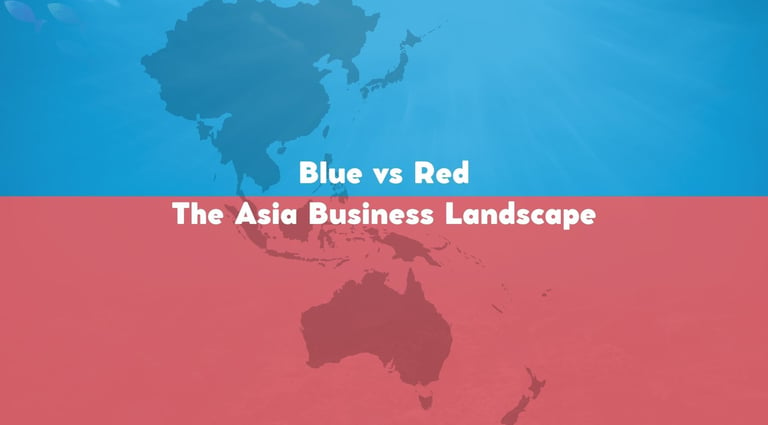

Red Ocean vs Blue Ocean Strategy: The Asia Business Landscape
Asia's business waters are teeming with both sharks and untapped treasures.
Red Ocean: The Crowded Seas
In Asia's saturated markets:
Cut-throat competition is the norm
Price wars eat profit margins
Innovation often means incremental improvements
Market share battles are fierce and costly
Examples:
Smartphone market in China: Xiaomi, Oppo, Vivo fighting for every percentage point
E-commerce in India: Flipkart and Amazon in a constant tug-of-war
Blue Ocean: Uncharted Waters
Opportunities for new market space in Asia:
Rapidly growing middle class craving novel experiences
Technological leapfrogging in developing regions
Unique cultural needs waiting to be addressed
Urbanization creates new consumer segments
Examples:
Grab in Southeast Asia: Transformed transportation and food delivery
WeChat in China: Created a super-app ecosystem beyond messaging
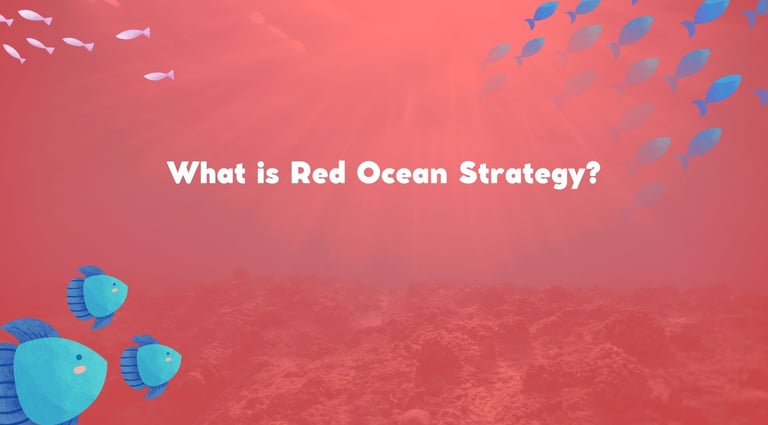

What is Red Ocean Strategy?
Red Ocean Strategy is the traditional battleground of business, where companies fight tooth and nail for market share.
It's characterized by:
High competition: Think sharks in a feeding frenzy
Focus on existing demand: Fighting over the same customers
Improving existing products: Incremental changes rather than revolutionary leaps
In a Red Ocean:
Risk is higher: More competitors mean lower profit margins
Marketing is present-oriented: It's all about beating the competition now
Companies must choose: Either create greater value or offer lower prices, rarely both
The Red Ocean approach:
Aims to outperform rivals within existing market boundaries
Uses aggressive marketing, competitive pricing, and enhanced user experience
Focuses on capturing a larger slice of the existing pie, not creating a new one
Real-world example: McDonald's
Before: Fast food was a fragmented market with local players dominating their regions.
McDonald's move: Standardized their menu, streamlined operations, and aggressively expanded globally.
Result: McDonald's became the world's largest fast-food chain, dominating the industry through consistent quality and aggressive marketing.
In Asia's bustling markets, Red Ocean strategies are common.
Think of the fierce competition among smartphone brands or e-commerce platforms.
But here's the kicker:
While Red Ocean strategies can lead to success, they often result in diminishing returns as markets become saturated.

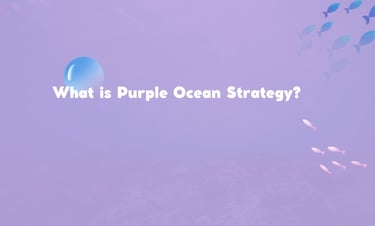
What is Purple Ocean Strategy?
Purple Ocean Strategy blends the best of both worlds, combining the fierce competition of Red Oceans with the innovative spirit of Blue Oceans.
It's about:
Competing in existing markets while offering unexpected extras
Differentiating yourself without abandoning familiar territory
Exploiting your current customer base to drive loyalty and word-of-mouth
Key characteristics:
Added value: Going beyond the expected to delight customers
Innovation within constraints: Finding creative solutions in competitive spaces
Adaptive and sustainable: Evolving with the market while maintaining core strengths
Real-world example: Apple's iPhone
Before: Smartphones were functional devices for calls and basic internet.
Apple's move: Entered the existing market but revolutionized the user experience with a touch interface and app ecosystem.
Result: Apple dominates the high-end smartphone market while continually innovating to stay ahead.
In Asia's context:
DBS Bank (Singapore): Transformed traditional banking with digital innovation
Xiaomi (China): Offers high-quality tech at competitive prices, with an ecosystem of smart home products
Purple Ocean Strategy allows businesses to:
Break the transactional mindset: Focus on building good relationships, not just sales
Leverage existing strengths: Use your market position as a launchpad for innovation
Balance risk and reward: Innovate without completely abandoning familiar territory
Remember:
Purple Ocean isn't about choosing between competition and innovation.
It's about mastering both.
For Asian businesses, this approach offers a powerful middle ground.
It allows you to thrive in competitive markets while carving out unique value propositions.
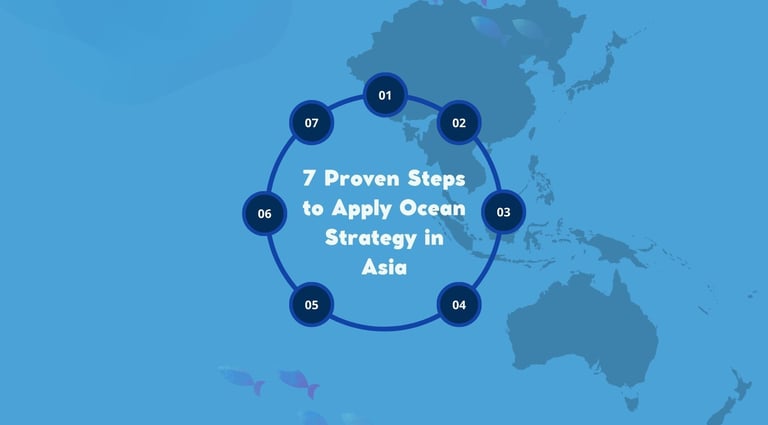

How to Apply Ocean Strategy in Asia: 7 Proven Steps
Ready to dive into Asia's business waters? Let's chart your course with these 7 actionable steps:
Analyze the Current Market Landscape
Map out your competitors: Who's dominating? Who's struggling?
Identify pain points: What frustrates customers in your industry?
Spot trends: Where is the market heading?
Red Ocean: Identify key competitors and their strategies
Blue Ocean: Look for uncontested market spaces
Purple Ocean: Spot opportunities to add unique value in existing markets
Pro tip:
Use local market research firms. They understand Asian nuances better than global agencies.
Identify Strategic Opportunities
Look for underserved segments: Who's being ignored?
Explore adjacent industries: Can you bridge gaps between sectors?
Think cross-border: Can a solution from one Asian country work in another?
Red Ocean: Find ways to outperform rivals on price or quality
Blue Ocean: Discover untapped customer needs or emerging trends
Purple Ocean: Seek areas where innovation can enhance existing offerings
Example:
Grab saw an opportunity in Southeast Asia's fragmented transportation sector.
Xiaomi entered the red ocean of smartphones but created a purple ocean with its ecosystem approach.
Redefine Your Target Audience
Go beyond demographics: What are their aspirations?
Understand cultural contexts: How do values differ across Asian countries?
Identify early adopters: Who will champion your innovation?
Red Ocean: Segment existing customers more effectively
Blue Ocean: Identify non-consumers and why they're not buying
Purple Ocean: Understand how to delight current customers in unexpected ways
In Asia, family and community often influence individual decisions.
Create Innovative Value Propositions
Solve real problems: Address actual needs, not perceived ones
Blend tradition with innovation: Respect cultural norms while pushing boundaries
Offer unexpected extras: What can you provide that no one else does?
Red Ocean: Improve on existing features or lower costs
Blue Ocean: Offer something entirely new to the market
Purple Ocean: Blend competitive pricing with innovative extras
Case study:
Singapore Airlines competes in the red ocean of air travel but creates purple oceans with superior service.
Overcome Cultural and Regulatory Challenges
Partner with locals: They navigate bureaucracy better
Adapt, don't copy: Tailor your approach to each market
Stay compliant: Understand and respect local regulations
Red Ocean: Comply with regulations better than competitors
Blue Ocean: Find regulatory loopholes for innovative services
Purple Ocean: Partner with local entities to blend compliance with innovation
Lesson learned: Alipay's expansion in Southeast Asia through local partnerships.
Build a Sustainable Competitive Advantage
Invest in R&D: Stay ahead of the curve
Create ecosystems: Make it hard for customers to leave
Foster brand loyalty: In Asia, relationships matter more than transactions
Red Ocean: Focus on efficiency and cost leadership
Blue Ocean: Patent innovations and first-mover advantages
Purple Ocean: Create customer loyalty through unique experiences
Strategy: How Toyota maintains market share (Red) while investing in future tech (Blue).
Scale and Expand Across Asian Markets
Start small, think big: Test in one market before expanding
Leverage similarities: Use learnings from similar cultures
Be patient: Building trust in Asia takes time
Red Ocean: Aggressive marketing and pricing strategies
Blue Ocean: Gradual expansion, educating new markets
Purple Ocean: Leverage existing brand strength to introduce innovations
Remember:
What works in Tokyo might flop in Jakarta.
Always localize.
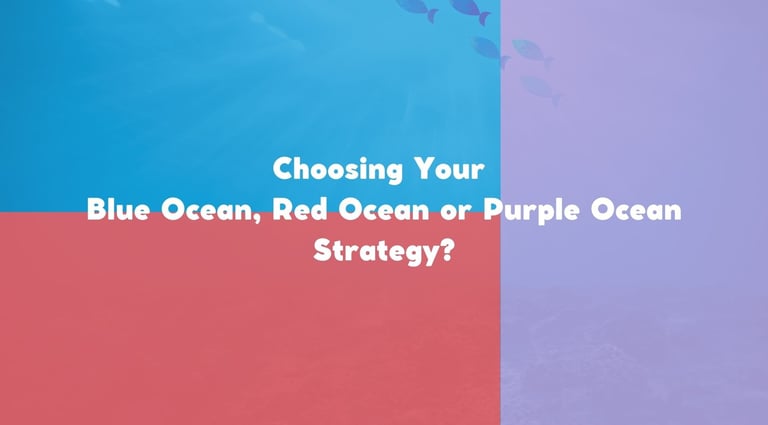

Choosing Your Blue Ocean, Red Ocean or Purple Ocean Strategy?
Selecting the right ocean isn't just a strategic decision - it's your business lifeline in Asia's dynamic waters.
Red Ocean: The Shark-Infested Waters
When to dive in:
You've got a killer competitive advantage
Your industry's still growing
You can consistently outswim rivals
Warning signs:
Unhealthy competition (e.g., subsidy wars)
Razor-thin profit margins
Lack of clear differentiation
Pro tip: In Asia's Red Oceans, cost leadership often trumps brand power.
Blue Ocean: Uncharted Territories
Ideal conditions:
You've spotted unmet market needs
Your innovation creates new demand
You're ready for long-term investment
Challenges to consider:
High initial costs (think AI development)
Educating the market can be expensive
Regulatory hurdles for novel concepts
Remember: Asia's Blue Oceans can turn Red quickly.
Stay agile!
Purple Ocean: The Best of Both Worlds
Perfect for:
Businesses with strong foundations looking to innovate
Markets where tradition meets technology
Companies aiming to delight existing customers in new ways
The Asian Twist:
Cultural diversity: A Blue Ocean in Tokyo might be a Red Ocean in Mumbai
Regulatory landscape: Some Asian markets welcome disruption like Singapore, others resist
Speed of change: Today's Blue Ocean can be tomorrow's Red Ocean
Key takeaway:
The most successful Asian businesses don't just choose one ocean.
They navigate between them, adapting their strategy to each market's unique conditions.
Your ocean strategy should be as diverse and dynamic as Asia itself.
Remember:
Each Asian market may require a different ocean strategy.
Be flexible.
You might start in one ocean and navigate to another as markets evolve.
By mastering all three ocean strategies, you're not just playing the game - you're changing it.
You're positioning yourself to lead them.
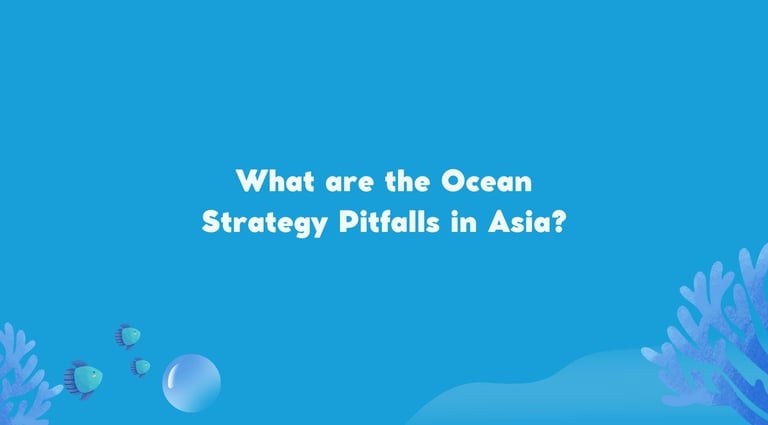

What are the Ocean Strategy Pitfalls in Asia?
Even the most seasoned captains can hit rough seas.
Here's your guide to avoiding common Ocean Strategy shipwrecks in Asia:
Cultural Misunderstandings: The Hidden Icebergs
Potential disasters:
Misinterpreting local customs and values
Assuming one Asian market is like another
Overlooking the importance of relationship-building
How to stay afloat:
Invest in deep cultural research
Hire local talent and advisors
Practice patience - trust-building takes time in Asia
Real-life wreck:
eBay's failure in China is due to misunderstanding local cultural differences and shopping behavior.
Regulatory Hurdles: The Unexpected Storm
Common challenges:
Complex and ever-changing regulations
Protectionist policies favoring local businesses
Varying data privacy laws across Asian countries
Your life jacket:
Partner with local legal experts
Build relationships with regulatory bodies
Stay flexible - be ready to adapt your strategy
Case study:
Uber's regulatory battles in Hong Kong vs. Grab's local compliance approach
Market-Specific Challenges: The Treacherous Currents
Hidden dangers:
Underestimating local competitors
Misjudging market readiness for innovation
Overlooking infrastructure limitations
Your navigation tools:
Conduct thorough market-specific research
Test and iterate your approach in each market
Be prepared to localize your product or service
Lesson learned:
Amazon's struggles in India against homegrown rival Flipkart which tops the online shopping market in India with almost 50% market share.
Over-Innovation: The Siren's Call of Blue Oceans
The allure:
Creating groundbreaking products
Entering untapped markets
Being the "first mover"
The reality check:
High Research and Development costs
Educating the market can be expensive
Risk of creating a product nobody wants
Avoid the trap: Balance innovation with market demand.
Ignoring Purple Oceans: Missing the Middle Ground
The oversight:
Focusing solely on Red or Blue Ocean strategies
Neglecting opportunities to innovate within existing markets
The opportunity:
Blend competitive tactics with innovation
Leverage your strengths while exploring new territories
Remember:
In Asia's diverse business seascape, one-size-fits-all strategies often sink.
Your best compass?
Adaptability, local insights, localization, and a willingness to navigate between Red, Blue, and Purple Oceans as needed.

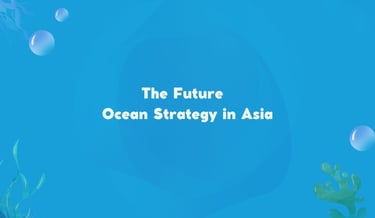
The Future of Ocean Strategy in Asia
Asia's business seascape is evolving at warp speed. Let's peek into the crystal ball and explore the emerging trends and untapped blue oceans.
Emerging Trends:
Tech-Driven Transformation
AI and machine learning reshaping industries
Blockchain revolutionizing finance and supply chains
IoT creating smart cities and homes
Opportunity: Blend traditional Asian values with cutting-edge tech for purple ocean innovations.
Sustainability Revolution
Green tech boom in response to climate challenges
Circular economy models gaining traction
ESG (Environmental, Social, Governance) becoming crucial
Blue Ocean Alert: Eco-friendly solutions for Asia's megacities could be the next big wave.
Silver Economy Surge
Rapidly aging populations in Japan and South Korea
Growing demand for eldercare tech and services
Opportunities in healthcare, finance, and lifestyle products
Purple Ocean Potential: High-tech solutions with a human touch for the elderly.
Rural Digitalization
E-commerce and digital services reaching remote areas
Fintech bringing banking to the unbanked
Edtech bridging urban-rural education gaps
Red Ocean Warning: Competition will be fierce, but first-movers can carve out blue spaces.
Experience Economy 2.0
Virtual and augmented reality transforming retail and entertainment
Personalization reaching new heights with AI
Blending online and offline experiences in unique ways
Opportunity: Create immersive, culturally-relevant experiences that stand out.
Vertical Farming in Megacities
Ultra-efficient urban agriculture solutions
Combining traditional Asian farming wisdom with high-tech approaches
Addressing food security and sustainability in one stroke
Blue Ocean Opportunity: New farming revolution inside the city with tall buildings
Next-Gen Language Tech
Real-time translation for Asia's diverse linguistic landscape
AI that understands and translates cultural context, not just words
Preserving endangered Asian languages through tech
Purple Ocean Potential: AI breaks language barriers within Asia
Remember: Today's blue ocean can quickly turn purple or red.
Stay agile, keep innovating, and always have your finger on Asia's pulse.
The future of Ocean Strategy in Asia isn't about choosing between red, blue, or purple.
It's about mastering the art of navigation, adapting your sails to the ever-changing winds of opportunity.
Are you ready to set sail into Asia's exciting future?
The next wave of innovation is yours to catch!
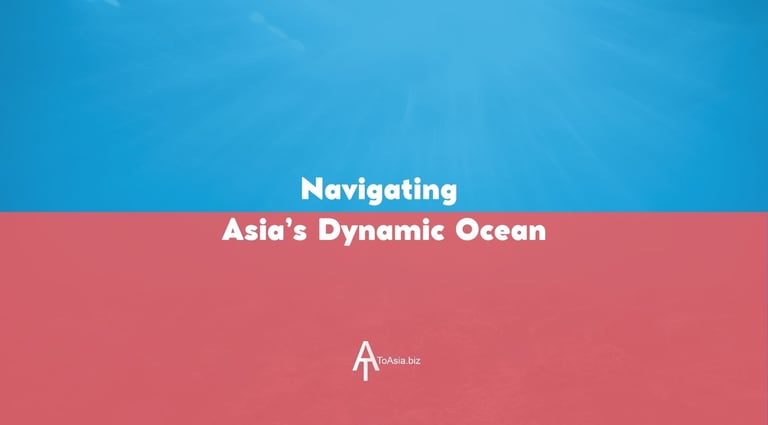



Alan Wong is founder of ToAsia.biz and a startup mentor with over 20 years of professional experience managing software, Saas and consulting services MNCs.
About Author
Copyright © 2025 ToAsia.biz


We lead your business to Asia
Our Business Growth Experts help SaaS businesses achieve growth in Asia and become profitable FAST.
Send us a message via WhatsApp
